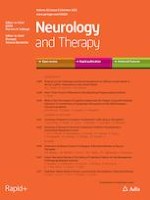Published in:

Open Access
18-06-2023 | Central Nervous System Trauma | ORIGINAL RESEARCH
Shunt-Dependent Post-Traumatic Hydrocephalus: Predictors and Long-Term Functional Outcomes
Authors:
Hao Xu, Yongfei Dong, Dejun Bao, Xiangpin Wei, Chaoshi Niu, Xinfeng Liu
Published in:
Neurology and Therapy
|
Issue 5/2023
Login to get access
Abstract
Introduction
As a disorder of the brain in adults and children, traumatic brain injury (TBI) is considered the major cause of mortality and morbidity. As a serious complication of TBI, post-traumatic hydrocephalus (PTH) is commonly identified and significantly associated with neurocognitive impairment, motor dysfunction, and growth impairment. The long-term functional outcomes after shunt dependence are totally not clear.
Methods
This study included 6279 patients between 2012 and 2022. To identify the unfavorable functional outcomes and the PTH-related factors, we carried out univariable logistic regression analyses. To identify the occurrence time of PTH, we conducted the log-rank test and Kaplan–Meier analysis.
Results
Mean patient age was 51.03 ± 22.09 years. Of the 6279 patients with TBI, 327 developed PTH (5.2%). Several PTH development-associated factors, such as intracerebral hematoma, diabetes, longer initial hospital stay, craniotomy, low GCS (Glasgow Coma Scale), EVD (external ventricular drain), and DC (decompressive craniectomy) (p < 0.01), were identified. We also analyzed the factors of unfavorable outcomes after TBI including > 80 years, repeated operations, hypertension, EVD, tracheotomy, and epilepsy (p < 0.01). Ventriculoperitoneal shunt (VPS) itself is not an independent factor of the unfavorable outcome but shunt complication is a strong independent factor of unfavorable outcome (p < 0.05).
Conclusion
We should emphasize the practices that can minimize the risks of shunt complications. Additionally, the rigorous radiographic and clinical surveillance will benefit those patients at high risk of developing PTH.
Trial registration
ClinicalTrials.gov identifier, ChiCTR2300070016.